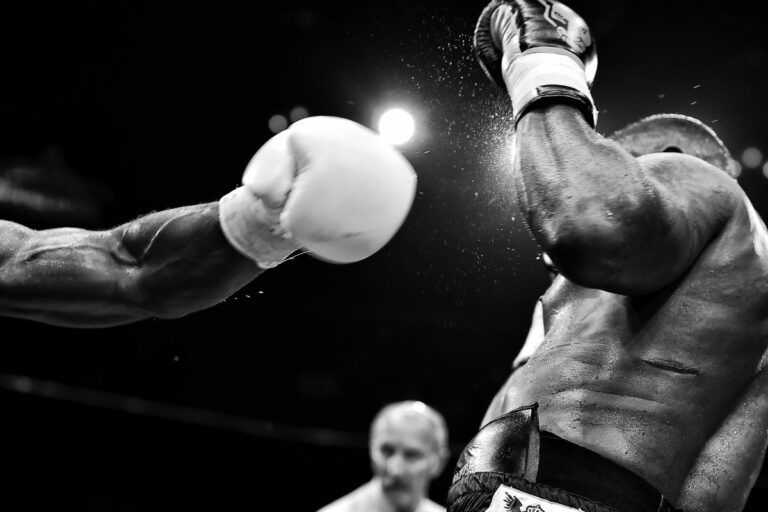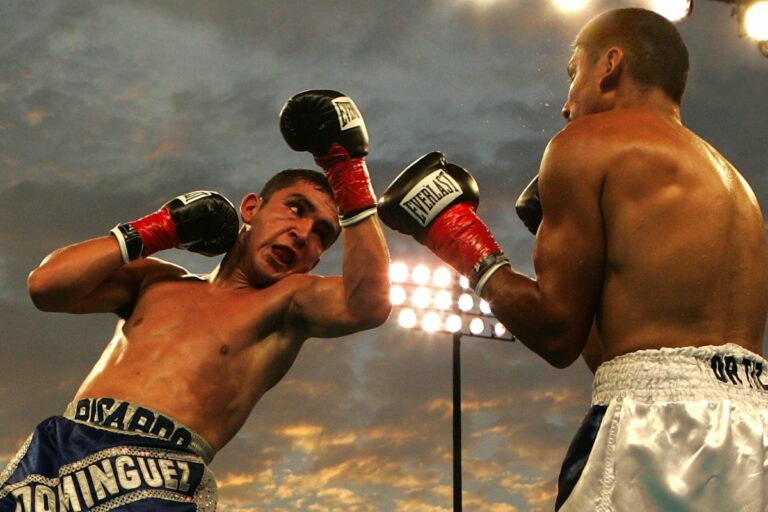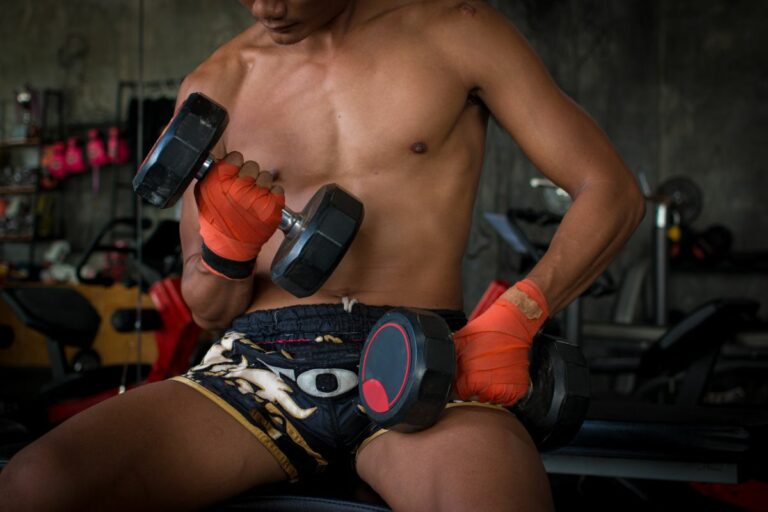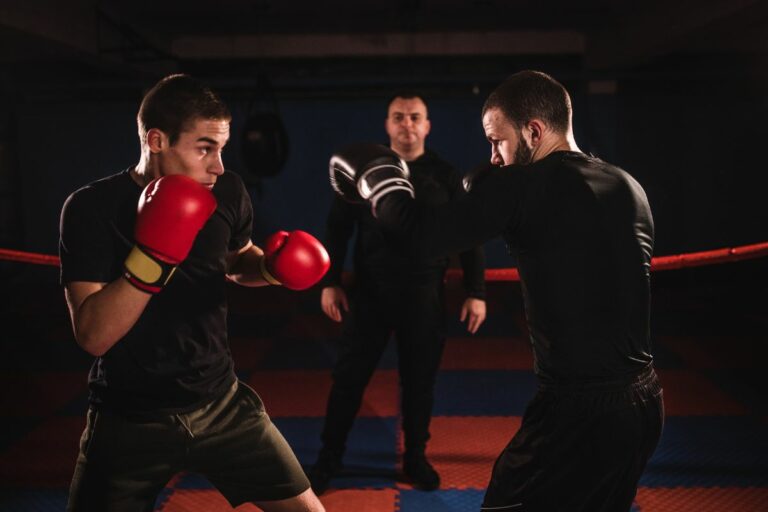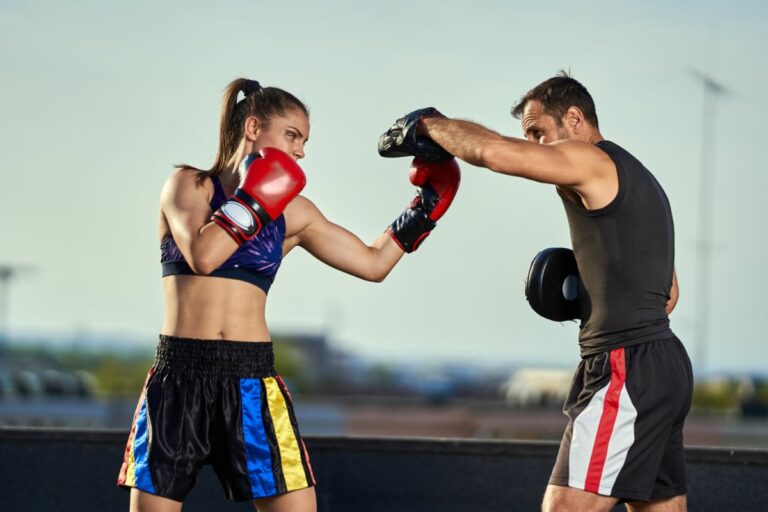What Is The Average Punching Speed? Punching Speed Analyzed
When you consider the best boxers of all time, you think of boxers like Floyd Mayweather Jnr, Manny Pacquiao, Mike Tyson, and Muhammad Ali.
One attribute all of these boxers have in common is their ability to land multiple punches in a short amount of time before their opponent has the chance to react. In other words; their speed.
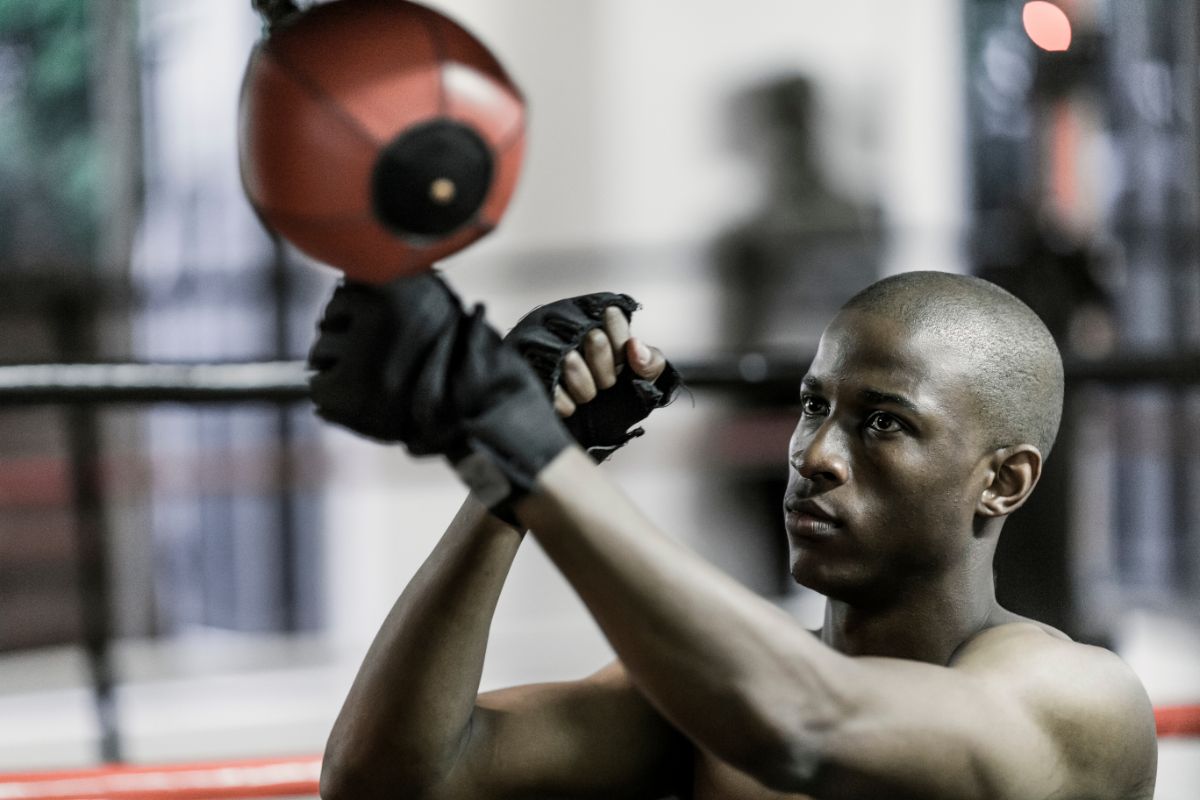
Speed is vital to a boxer and the faster you punch the more hits your Lands and the more damage you will do to your opponent.
Whilst fitness is an integral part of becoming a fighter; fitness does not mean you will have a fast punch, which is why so much emphasis is put on speed work in a training camp and throughout a boxer’s journey.
Today I will look at the average speed for a boxer, in terms of how fast a punch is, how punching speed is measured and how you can improve your punching speed.
What Is The Average Punching Speed?
The average speed of a punch is around 25 mph, which is around 40 km/h. If we look at the average speed a normal person punches you looking at around about 15 mph which is roughly 24 km per hour.
It’s not remiss to see some of the world’s best boxers punch up to 32 mph which is north of 50 km/h.
So you can see why practicing your speed work will pay dividends to your boxing skill in the long run. When you compare a =Punch that is 15 mph against a punch pushing 30 mph, this difference in Speed is the difference between victory and defeat.
What’s impressive about these fast punches is when you consider how long it takes to throw the punch in the first place. As a punch travels a very short distance, i.e. the reach of a fighter.
Those that have quick hands can easily punch faster than a blink of an eye making them a deadly weapon in a boxing situation.
In fact, when you measure a boxer’s punch you can see that they take anywhere from 60 to 100 milliseconds to occur.
We mentioned Manny Pacquiao at the start, where it has been shown that he can punch in just 0.12 seconds. Which calculates at around 806 pounds of force.
So you can see that speed is often one of the most important factors for boxers; not fitness, or power, but speed.
Whilst we would never say not to work on one of these attributes; you can build a decent boxer from the ground up by focusing on their speed above all else.
How Is Punching Speed Measured?
Surprisingly, it’s often debated how fast the human punch actually is, as there ever been very few attempts to measure the speed of a human punch.
What’s most surprising is that the fastest punches are determined by the naked eye rather than any scientific measurement. This is because a punch is never thrown in a straight line, making it difficult to measure.
However, the continuation of technological improvement has meant that punching speeds will be able to be more accurately measured than a general guesswork strategy.
Now apps on your phone that can measure the speed of your punch. The way they work is you throw a punch whilst holding your phone in your hand and the phone will pick up the velocity of the punch.
You can even get sensors worn on your wrist that will use a 3-axis gyroscope that accurately measures your punching speed.
This is a great tool that gives you real-time data so you can tell whether your boxer is improving, whether they need more training, or whether they are training too much and are suffering from the effects of fatigue.
We will hope to see you even more improvements over the coming years that will be able to accurately determine the speed of a punch.
Boxing Versus Martial Arts Punching Speed
There is a difference between the speed of punching and the fighting discipline in question.
This is because boxers punch differently from martial artists, and the difference in styles and technique means there is a difference in speed and power.
In boxing, not only is speed important but also power as well. This is calculated by measuring the mass and acceleration which equals the force of the punch thrown, i.e. F=MA.
Martial artists Focus more on speed and power, which generally means that they will punch faster but do less damage to the opponent.
How To Punch Faster
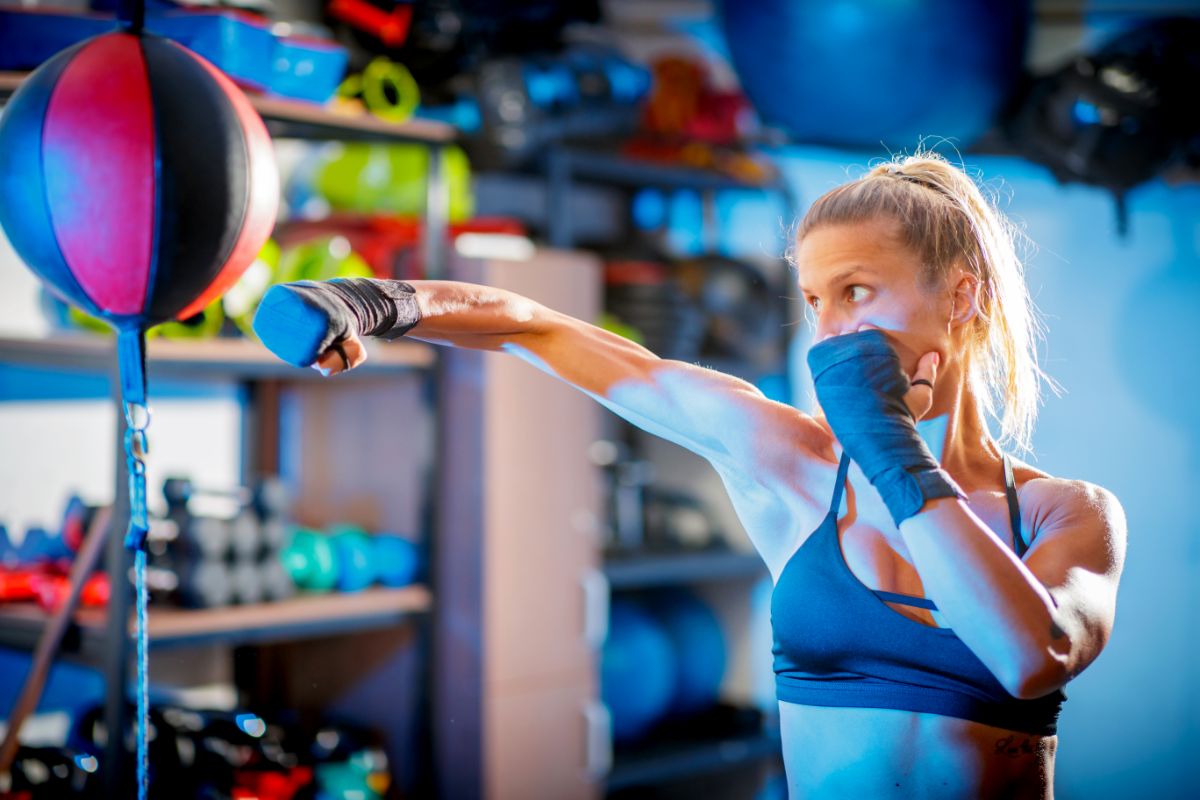
So here are some tips on how to punch faster. One thing to note is that punching faster is not about increasing your hand speed, and there are many elements to work on besides hitting up the speed bag.
You will need to work on multiple muscle groups and multiple areas of your body to improve your speed.
If you consider yourself intermediate or above you may wish to consider working on your weak areas, as most of us have our strong points that are already well developed. Focusing on your weak areas will help build a better package.
Here are some of the key areas for improving the speed of your punch:
Lower Body
Surprisingly, most of the power a boxer has will come from their legs. This is often a shock to beginner boxers who think all the work needs to be done in their biceps, triceps, and shoulders, this is simply not the case.
If we take into consideration the kinetic energy that is driven all the way up from the feet, that rotates at the hits and then travels up to the body all the way down the arm into the fist; focusing on building up the larger muscles in the legs, glutes, and hips is vital for a fast and powerful punch.
Abdominal Muscles And Core
Moving up towards the trunk of the body, abdominal muscles, and the overall course will help to build power and speed due to the rotational movement of the trunk.
Call or lagging abdominal muscles or typically generate less speed than a boxer who works on their abs. Make sure to include plenty of abdominal-based exercises, as well as stabilization work such as lunges and medicine ball throws.
Chest
Although considered one of the vanity muscles that is popular in bodybuilding, the chest actually serves as an important group of muscles That can strengthen the movement and rotation of the shoulder joint.
One of our favorite exercises to build the chest is the classic push-up. It’s easy to complete, can be done pretty much anywhere, and is an excellent prehab exercise that improves the health of the shoulder joint.
Back
A boxer is only as good as his back strength, and one of the most important elements for building up a boxer is to work on the latissimus dorsi and various back muscles.
This group of muscles will help to enhance delivery speed and improve the impact of the punch.
What are the best exercises for the back? We recommend any vertical pulling and horizontal pulling movement patterns.
Our favorite vertical pulling is either pull-ups or lat pulldowns, and in terms of horizontal pulling, we recommend the inverted row or bent-over row.
Arm Work
Last but not least are the muscles located on the arms; the triceps, biceps, and shoulder joint.
The arm is the main tool that is used in a punch, which means that the muscles in the arm are responsible for the speed and snap as opposed to where the power is generated.
If you concentrate the power through the legs, core, or trunk of the body, the arm is the tip of the iceberg that delivers the blow.
Some of our favorite exercises for working the arm muscles are the simple tricep extensions and bicep curls, as well as shoulder pressing and lateral raises.
Final Thoughts
Learning to punch correctly with good technique is only half the battle in the journey to becoming a powerful fighter. Learning to harness your power and pull off a fast punch should be one of your priorities.
Hopefully, the tips above will guide you in the right direction and show you what you should be working on right now in your weight lifting workouts.
The muscles above what are the most important and if any of these areas are skipped you will compromise your overall speed.



